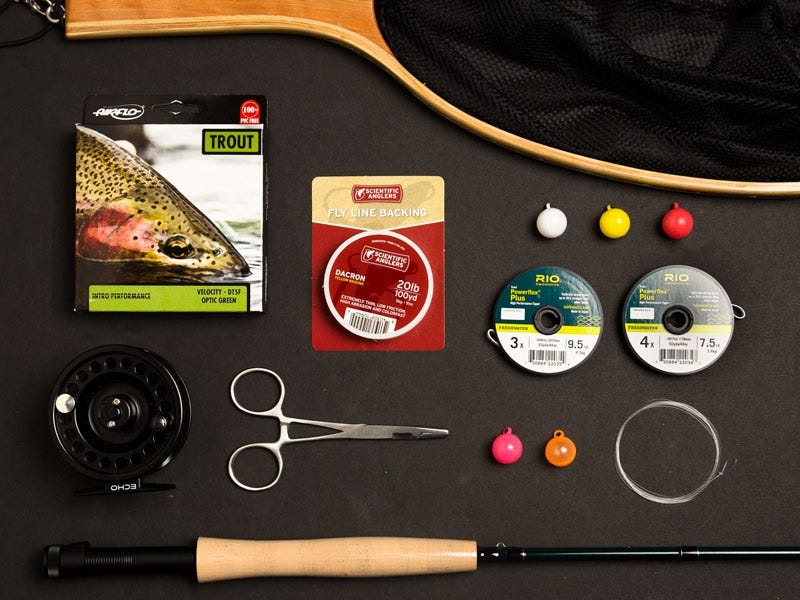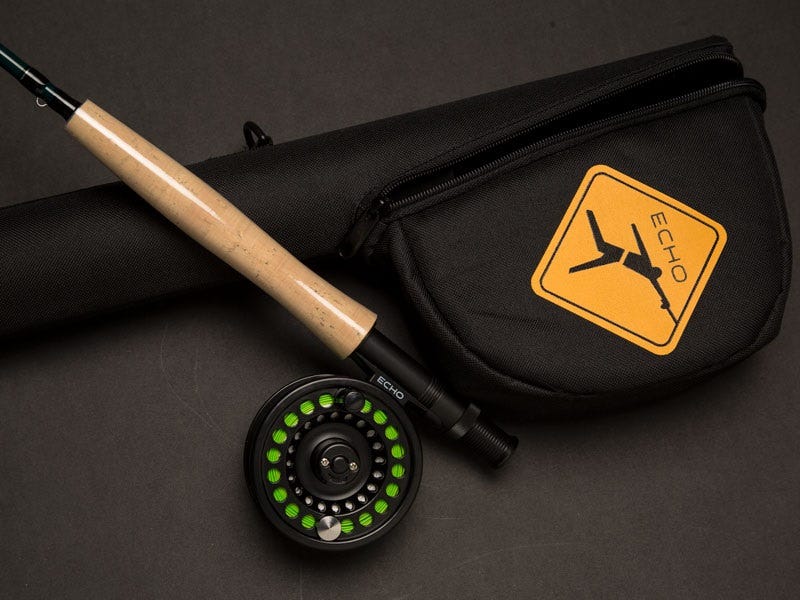What gear do I need to start fly fishing?


One of the first things that gets asked by people interested in fly fishing is what gear do I need to get started in fly fishing.
The perception for many people is that this is an expensive sport, which can be absolutely true if you want it to be, but it doesn’t have to be.
In fact, I would argue that compared to many similar sports such as archery, hunting, golf, camping and many other activities--fly fishing can be one of the most economical.
This is a list of what you NEED, in my opinion, to be successful.
Fly Rod: 9ft 5wt
Fly Reel: Matching 5wt
Backing: 20-30lb
Fly Line: Weight forward 5wt
Tapered Leader: 9 foot 3-4X
Tippet: 3X and 4X spool
Flies: What flies do you need to get started?
Forceps: Preferably with built in scissors
Strike indicators
Fly Floatant
Net
Optional, but Recommended:
Waders
Boots
So as you can see, if you add up the NEEDS on the first part of the list you can have quality gear and get all the things listed for well under $300 to get started (if you'd like our help achieving this, please use the form below and let us know you'd like a starter kit from North 40 Fly Shop).
If you want to add the optional boots and waders, a healthy budget would be an additional $300 (we can help here as well). Of course, you can spend much more than that (as I personally am well aware of), and much less as well.
Let's dive a little deeper into the basic gear you need to get started fly fishing.

Fly Rod and Reel
This is pretty obvious, but you are going to need to buy a rod, reel, and fly line. A few pointers on buying a combo like this.
If you are buying a brand new one make sure that you purchase a 9 foot 5 weight for most situations, especially if you're focusing on trout, blue gill, and bass on rivers and streams, this size and weight will be a great starting point.
There are many combos out there that are pre-rigged with backing (the line that goes on your reel before your fly line), the fly line itself, as well as a tapered leader (the clear monofilament section of line that is after your fly line that you will attach your fly to).
The pre-rigged combos are great and usually a value for what you are getting, especially if you stick to buying your gear from a business that really understands fly fishing. If you buy or receive a used rod and reel, then I can almost guarantee you that you will want to update the fly line that’s on the reel if there is one on the reel already.
This combo, the Echo Base Combo, is our best seller and a proven winner helping thousands of people get started fly fishing.
Tippet
Tippet is defined as the final section of your leader that attaches to your fly. Generally, your combo will come with a 9 foot tapered leader that is thick where it attaches to the fly line and tapers down to the "tippet section" where it is thinner so that it can fit through the eyelet of your fly and not scare the fish you are trying to trick.
As you use your tapered leader, eventually the section of your leader you are trying to attach your fly line to will get thicker because it is tapered.
Since it WOULD get expensive to buy a new tapered leader every time you ripped off flies and your leader retreated all the way up to the fatter section of the leader, we have tippet. You attach tippet to the leader in order to extend the life of said leader.
You will need tippet to attach to your tapered leader. We would recommend you have a spool of 3x and 4x tippet for most situations fishing for trout, blue gill or bass. The tippet can be attached to your tapered leader with a surgeons knot or a blood knot.
A basic tippet spool like this, and that's is all you'll need to get started.
Fly Fishing Accessories
A couple of accessories we highly recommend to have on the water include:
Forceps with scissors built in to safely unhook fish and easily cut your line after finishing knots. You could also get forceps and clippers separately, but at this stage we are assuming we are looking for the starter edition.
A net, it is less stressful for the fish and yourself if you have a net to land the fish with.
Strike Indicators, these are used when fishing with nymphs to indicate when a fish has eaten your fly under the water, and so you know when to "set the hook."
Fly Floatant, this is added to your dry flies (the ones that float on top of the water) to repel water and keep your fly floating on the surface.
So besides flies, that all you really NEED. Where should you start with flies?
I wrote all about how to get started with the right flies >> HERE.
Bonus Necessities? Waders and Boots
If you have the ability to spend a little more money when you are setting out, the one thing I would recommend investing in outside of the necessities would be waders and boots.
Many would disagree with me but the best fly fishing months IMO are March, April, May, June and then September and October. All those months the water is pretty cold and not necessarily a time to be directly in the water. It will make for a more comfortable, more enjoyable experience.
I also see people trying to skip this purchase when they are first starting, and then aren’t able to wade in to the water to where they really need to be to reach the fish that are eating, or even to cross the water on smaller streams.
You can check out our selection of waders here, and our selection of wading boots online here.
The boots also come in different types of soles made to add traction when wading on slippery rivers and streams, so this is also a safety precaution for many anglers.
Again, if you don’t know where to start, this combo >> HERE is the best value that we sell to get started and we highly recommend it but there are many options out there.
For more questions and information, even if it’s used gear or something we don’t sell, please feel free to reach out and ask us anything and we will do our best to give you the most honest answers and opinions about what you really need to get started fly fishing.
